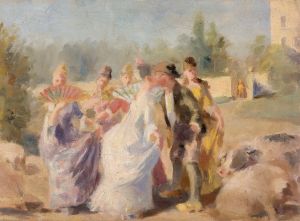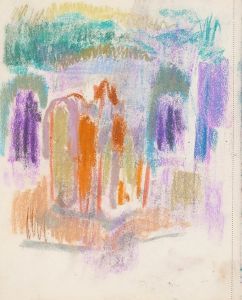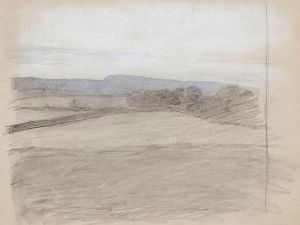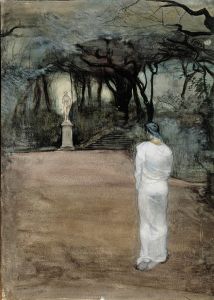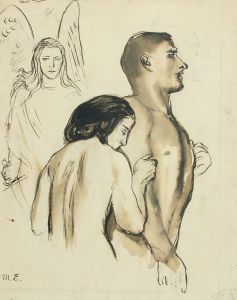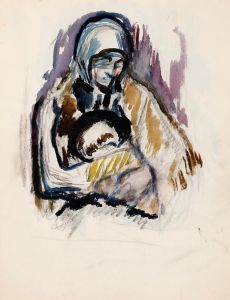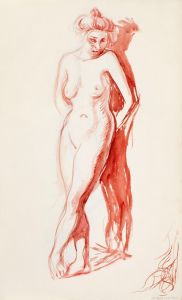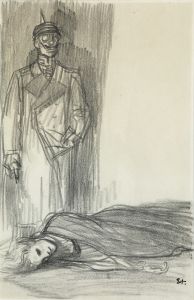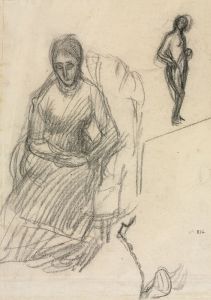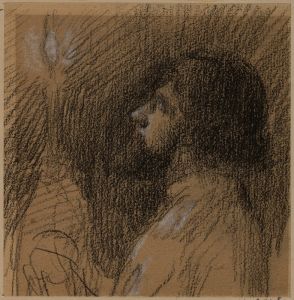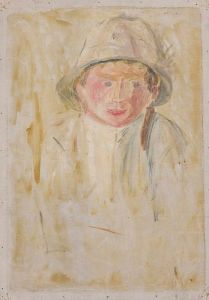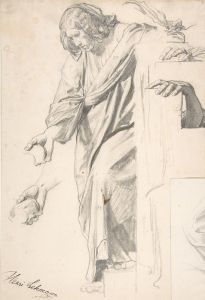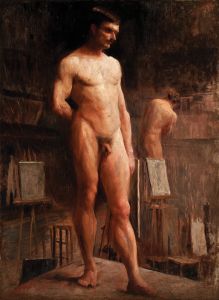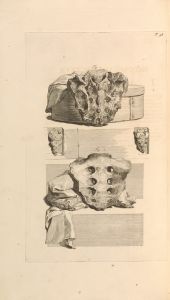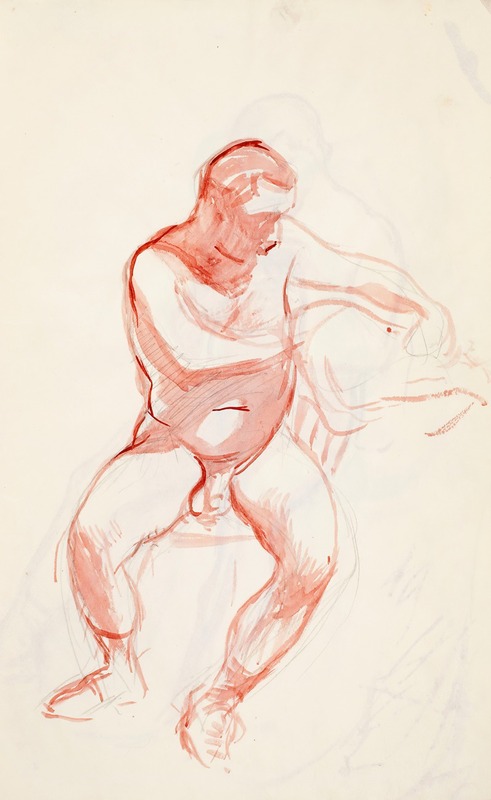
Istuva alaston mies, luonnos
A hand-painted replica of Magnus Enckell’s masterpiece Istuva alaston mies, luonnos, meticulously crafted by professional artists to capture the true essence of the original. Each piece is created with museum-quality canvas and rare mineral pigments, carefully painted by experienced artists with delicate brushstrokes and rich, layered colors to perfectly recreate the texture of the original artwork. Unlike machine-printed reproductions, this hand-painted version brings the painting to life, infused with the artist’s emotions and skill in every stroke. Whether for personal collection or home decoration, it instantly elevates the artistic atmosphere of any space.
"Istuva alaston mies, luonnos" (translated as "Seated Nude Man, Sketch") is a work by the Finnish symbolist painter Magnus Enckell. Enckell, born on November 9, 1870, in Hamina, Finland, is renowned for his contributions to Finnish art, particularly during the turn of the 20th century. He was a prominent figure in the symbolist movement, which emphasized the expression of ideas and emotions through symbolic imagery and often featured themes of mythology, dreams, and the human psyche.
The sketch "Istuva alaston mies, luonnos" is a study of the male nude, a subject that Enckell explored frequently throughout his career. This particular work showcases Enckell's skill in capturing the human form with a delicate and precise touch. The use of light and shadow in the sketch highlights the contours and musculature of the seated figure, demonstrating Enckell's keen understanding of anatomy and his ability to convey a sense of three-dimensionality on a two-dimensional surface.
Enckell's approach to the male nude was influenced by his studies in Paris, where he was exposed to the works of the French symbolists and the academic tradition of life drawing. His time in Paris, from 1891 to 1893, was formative in shaping his artistic style and philosophy. During this period, he studied at the Académie Julian, a private art academy that attracted many international students and was known for its rigorous training in drawing and painting.
The symbolist movement, to which Enckell belonged, sought to move beyond the literal representation of subjects and instead aimed to evoke deeper emotional and spiritual truths. Enckell's nudes often embody this ethos, presenting the human body not merely as a physical entity but as a vessel for conveying inner states of being. His works are characterized by a sense of introspection and a focus on the inner life of his subjects.
"Istuva alaston mies, luonnos" is a testament to Enckell's mastery of the human form and his ability to infuse his drawings with a sense of quiet contemplation. The seated pose of the figure, with its relaxed yet attentive posture, suggests a moment of introspection or meditation. The simplicity of the sketch, with its minimal background and focus on the figure, draws the viewer's attention to the nuances of the human body and the subtle play of light and shadow.
Magnus Enckell's contributions to Finnish art were significant, and his works continue to be celebrated for their beauty and depth. He was a central figure in the development of modern art in Finland and played a key role in the establishment of the Septem group, an association of Finnish artists who sought to promote modernist ideas and techniques. Enckell's legacy is preserved in numerous collections, including the Ateneum Art Museum in Helsinki, which houses many of his works.
In summary, "Istuva alaston mies, luonnos" is a fine example of Magnus Enckell's skill as a draftsman and his ability to convey the human form with sensitivity and precision. The sketch reflects his symbolist sensibilities and his commitment to exploring the deeper aspects of the human experience through art.





